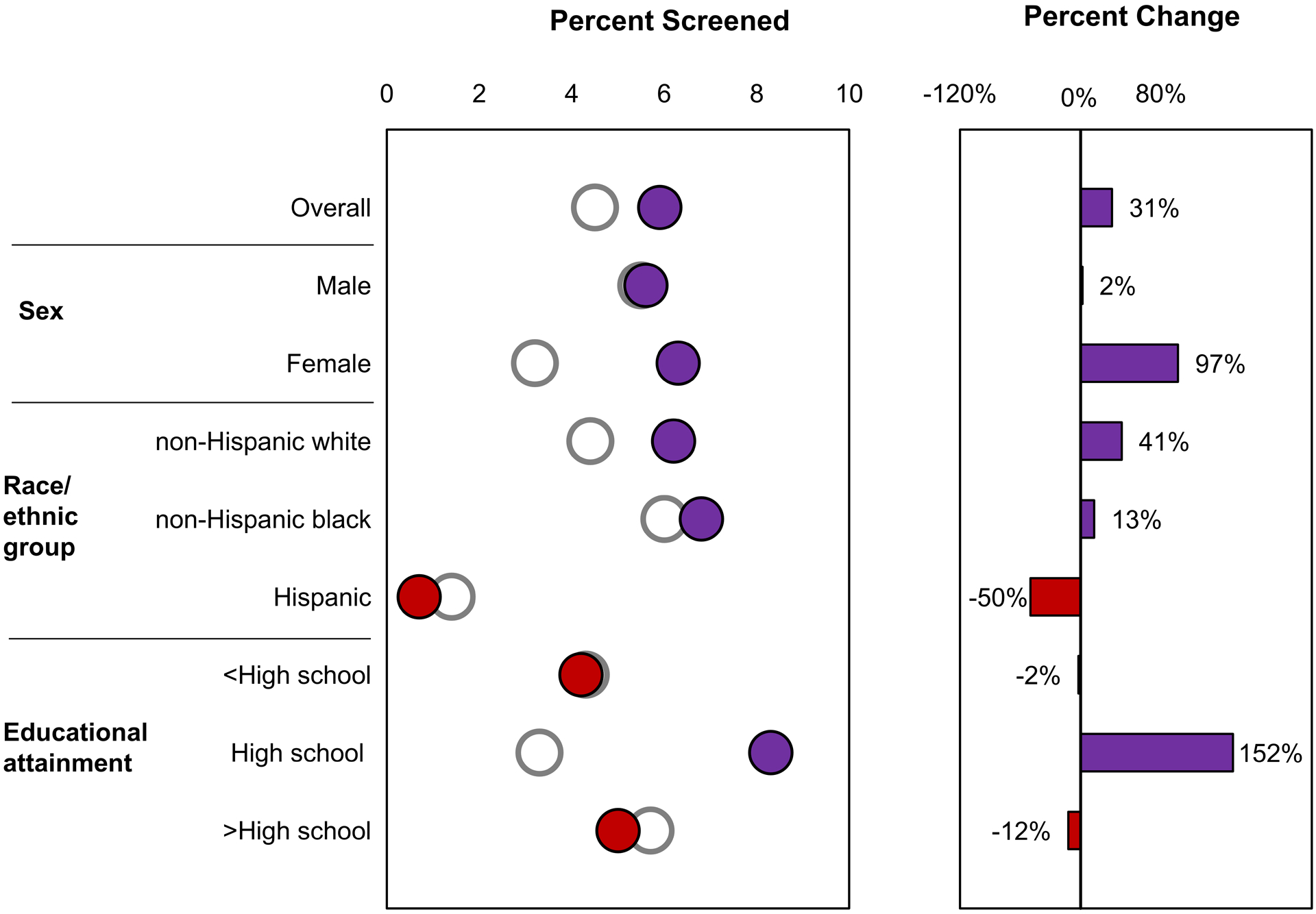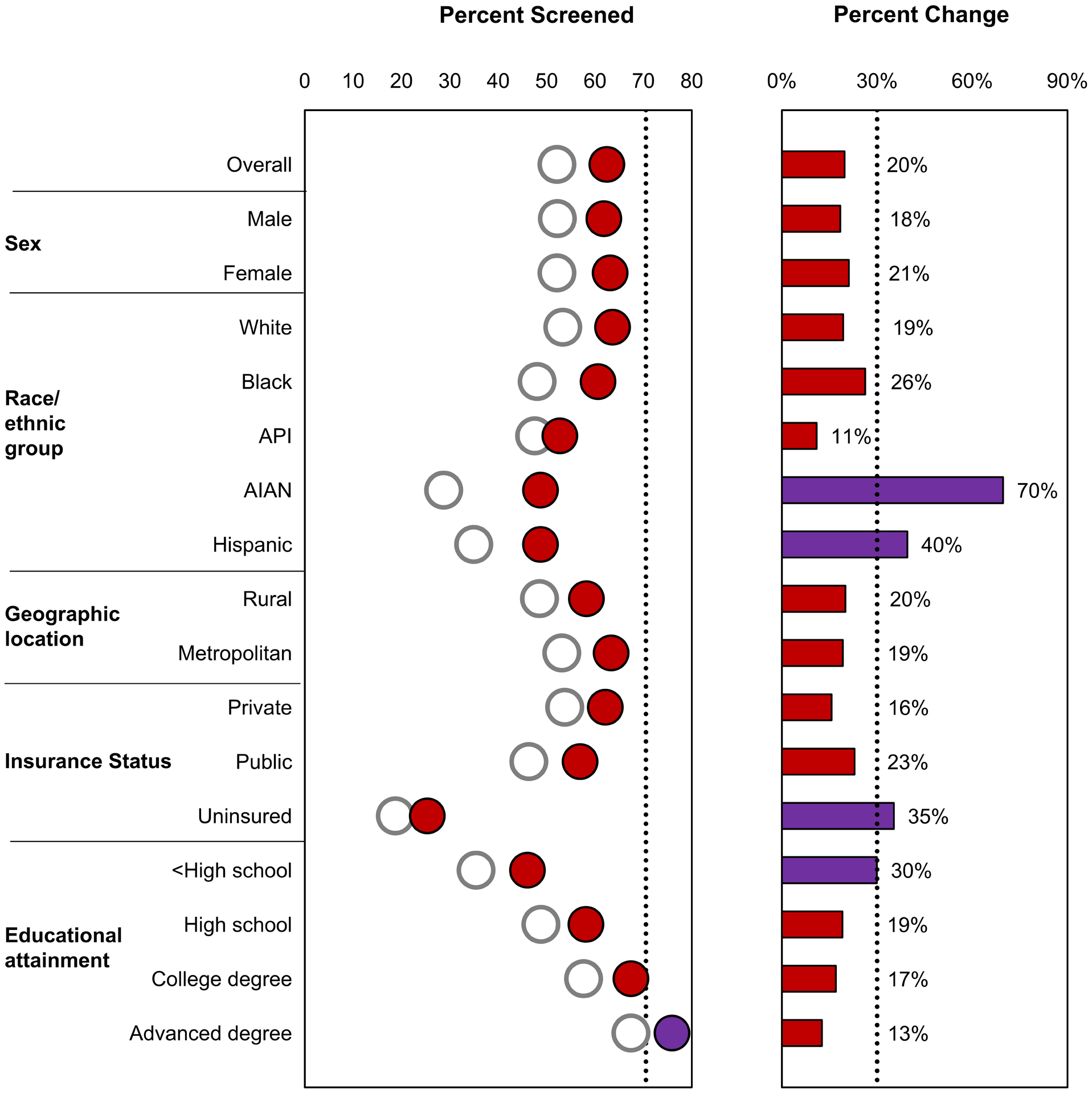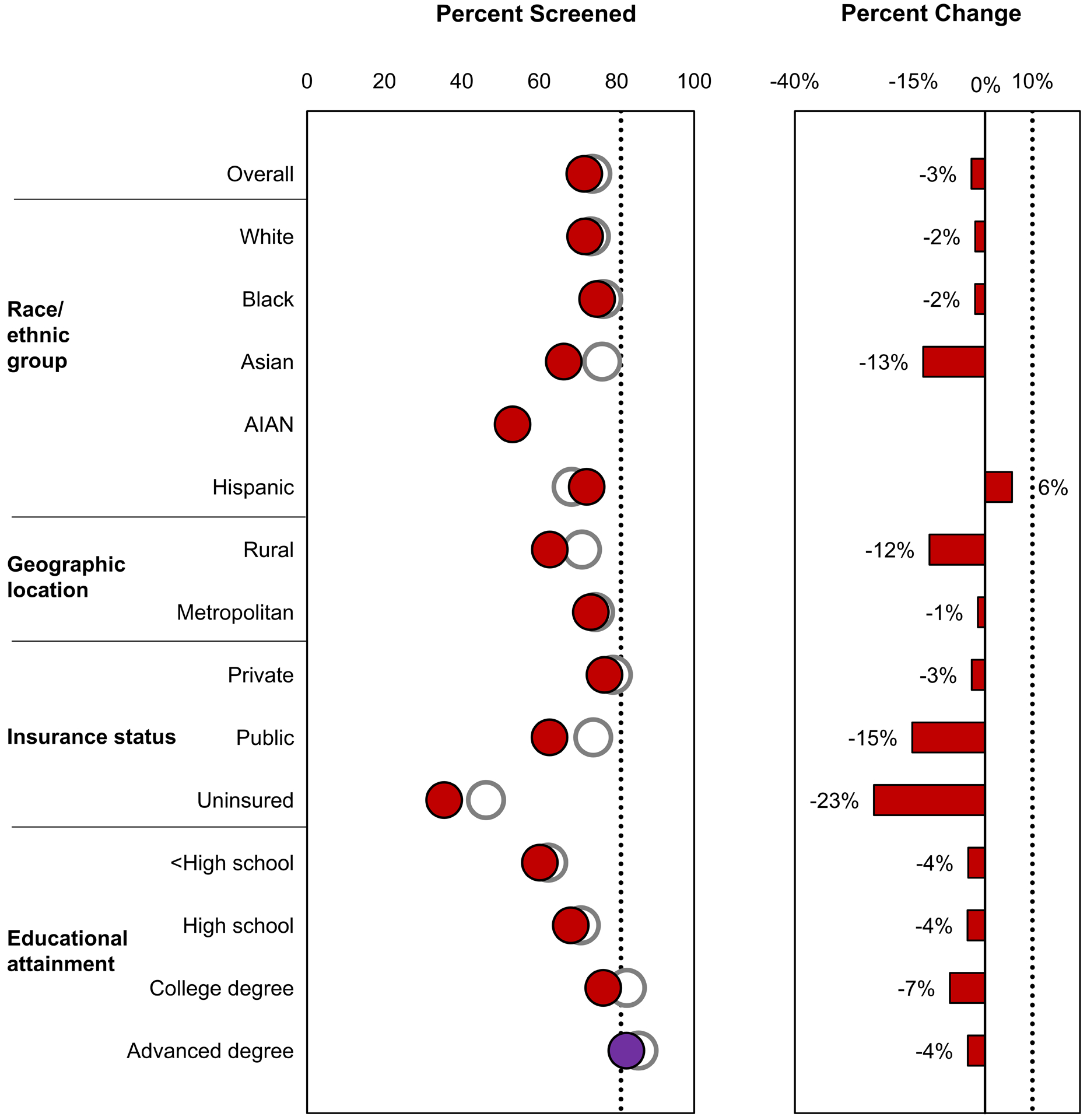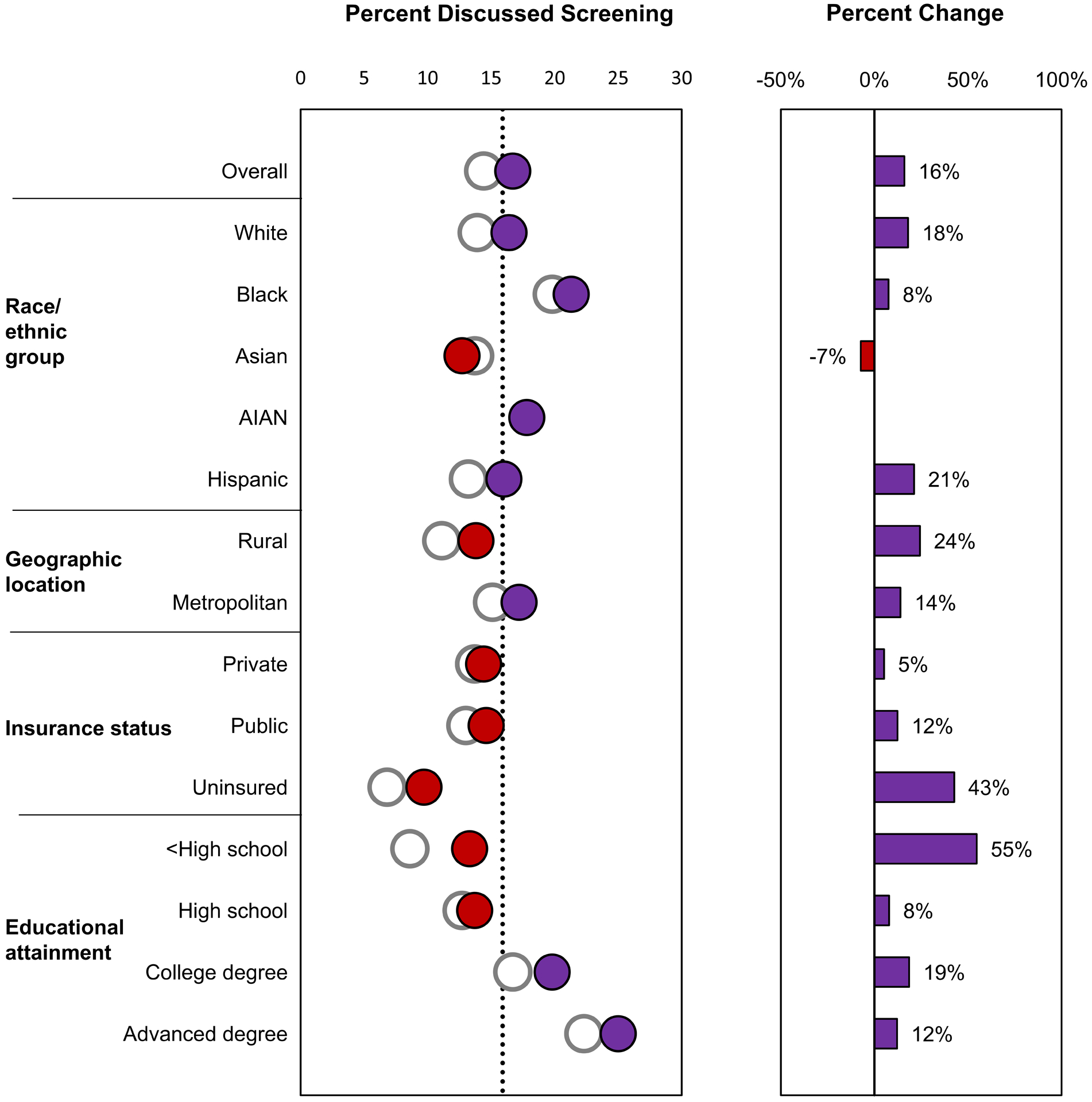Figure 3.




Healthy People 2020 objectives related to cancer screening are illustrated. Data are from the National Health Interview Survey; baseline values are from 2008 (except for lung cancer screening estimates, which are from 2010), and most recent estimates are from 2015. Healthy People 2020 targets are indicated by black dotted lines. The baseline value is indicated as a white circle, and the most recent estimate is indicated as a purple circle if the target was met and as a red circle if the target was not met. The percentage change from the baseline value to the most recent estimate is indicated as a purple bar if the percentage improvement target was met (or if the percentage change was in the indicated direction when a percentage improvement target was not specified) and as a red bar if the percentage improvement target was not met (or if the percentage change was not in the indicated direction when a percentage improvement target was not specified). The Healthy People 2020 targets are: (A) increase the proportion of adults aged 55 to 80 years at high risk of lung cancer based on smoking history who receive lung cancer screening based on the most recent US Preventive Services Task Force (USPSTF) recommendations (note that targets are not indicated because lung cancer screening was not included as a Healthy People 2020 objective); (B) increase the proportion of adults aged 50 to 75 years who receive colorectal cancer screening based on the most recent USPSTF recommendations from 52.1% in 2008 to 70.5% in 2020, a 30% improvement; (C) increase the proportion of women aged 50 to 74 years who receive breast cancer screening based on the most recent USPSTF recommendations from 73.7% in 2008 to 81.1% in 2020, a 10% improvement; and (D) increase the proportion of men aged ≥40 years who discuss the advantages and disadvantages of the prostate-specific antigen test to screen for prostate cancer with their health care provider from 14.4% in 2010 to 15.9% in 2020. AIAN indicates American Indian/Alaska Native; API, Asian or Pacific Islander.
